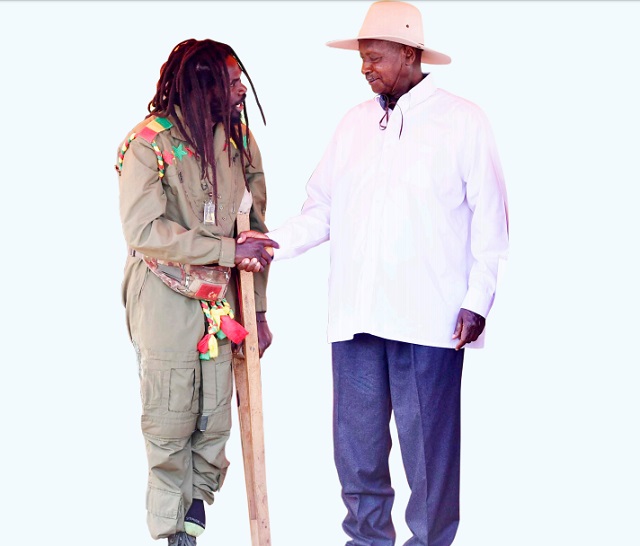
Behind Museveni strategy
The Katwe ghetto is Museveni enemy territory. The area MP, Allan Ssewayana, is from the radical extreme of the opposition Democratic Party (DP). In the last presidential election, Museveni got only 13% of the vote at one polling station; White Nile in Katwe I parish. In other areas Museveni got low figures like 14%, 17%, 20% and such. Museveni’s total vote tally in Katwe I parish was 18%, in Katwe II it was 28%. These were Museveni’s worst returns in the whole election. At the district level, Museveni got his worst vote tally nationwide; 30%, in Kampala. In 2021, it appears, he is determined to change that.
According to several analysts that The Independent spoke to, Museveni does not need the urban poor vote to win the election. Only 32% 0f Ugandans live in urban areas. But a look at the numbers shows that the population living in slums as a percentage of the urban population is 53.6 %.
The slum population is big but it is far less than the headcount of the real poor people across the country. People who live on less than US$2 a day (PPP) are 65% of the Uganda population according to figures in the United Nation’s Millennium Development Goals database.
Most of these very poor people do not live in urban centres. They live in the rural countryside. And they overwhelmingly vote Museveni and his ruling NRM party. Based on these figures Museveni has the numerical strength to win an election without courting the urban poor.
By appearing to take the fight to Bobi Wine in the ghetto, Museveni could be creating a diversion; ensuring that his opponents are fixated on the ghetto while Museveni runs away with the rural vote. It has happened before.
But there is new danger in 2021. Although still small, the number of urban poor is growing. Uganda is urbanising at a rate of 5% per year and Kampala is among the fastest growing cities in Africa; with a growth rate of 5.6%.
Most of the new arrivals settle first in the low cost ghettos such as Katwe, Kamwokya, Kisenyi, Katanga, Kinawataka, Kivulu and more. And it is happening in other towns and cities other than Kampala.
Jinja town in eastern Uganda has growing sprawling slums in in Masese, Loco and farther away in Wandago. This is an anti-Museveni haven and the area (Jinja Municipality East) MP is Paul Mwiru, from the opposition Forum for Democratic Change (FDC). He is also quite young; just 42 years old and a tight buddy of Bobi Wine who is 37 years old.
The other big town in the east, Mbale, is also anti-Museveni. The Mbale Municipality MP, 73-year old Jack Wamanga-Wamai is also from the FDC. He thrives on votes from the slum areas of Kikamba, barracks, Mutukula, Kiteso, Bulago, Bujoloto, Namatala, and Kikaramoja.
The threat to Museveni’s grip on power from the slums is real even in areas where Museveni is popular; such as Mbarara Municipality where the MP is 47-year-old Michael Tusiime from the ruling NRM. Nobody is sure how the growing number of poor unemployed youth gangs who stand at street corners in Mbarara town every morning hoping to be hired as casual labourers will vote. They come from growing slums in Biafra, Kisenyi, Kiyanja, Kirehe and Kijungu.
Museveni knows he cannot win fair and square in most of these ghettos or among the youth, one analyst said; his goal is to reduce on the margin of his loss. According to the latest Statistical Abstract of 2018 by the Uganda Bureau of Statistics (UBOS), about 23% of the Uganda population is between 18 and 30 years old. This range covers higher secondary school level, through tertiary education and early employment. This is the cohort likely to immigrate to urban centres and live in the ghetto. They are the group that appears to be behind Bobi Wine who is 37 years old and being courted by Museveni who, at 75 years of age, fondly refers to them as Bazukulu (grandchildren).
Ugandan urbanites, generally do not vote Museveni. But the President’s popularity dips even further in the ghettos, especially among the youth – who are the overwhelming majority. According to the UBOS statistics the rural population votes more than the urban; 74% compared to 61%. The more educated vote the least at 76%, followed by the youth in secondary school at 80% compared to uneducated who vote 88%. Bobi Wine’s strongholds Kampala and Central region vote the least at 36% and 51%.
 The Independent Uganda: You get the Truth we Pay the Price
The Independent Uganda: You get the Truth we Pay the Price


